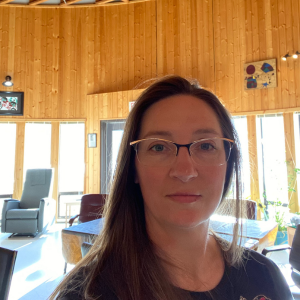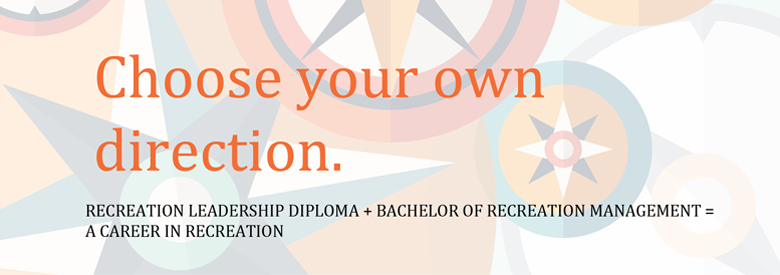RECR 4400 Research Summaries (2025)
How can Rosemary Brown Recreation Centre enhance access to arena-based recreation for youth in Burnaby through community partnerships and targeted programming?
Meredith Yu
Access to arena-based recreation for youth in Burnaby can be improved by building community partnerships and offering targeted programs at Rosemary Brown Recreation Centre (RBRC). Key barriers include financial challenges, limited physical literacy, and obstacles faced by newcomers and diverse groups, such as high equipment costs and language barriers. Research shows that many youth at RBRC come from diverse backgrounds, with parents often needing help with translation and equipment.
To tackle these challenges, RBRC can partner with the Burnaby School District to offer physical literacy programs that teach basic skating skills. An Equipment Loan and Exchange Program would make gear more affordable, and Newcomer and Multicultural Skating Programs would provide welcoming, culturally sensitive instruction. Diversity-centered sessions would also create safe spaces for underrepresented groups.
By utilizing RBRC’s unique features—like two ice sheets and an extended season—and fostering partnerships, the centre can make ice sports more inclusive and accessible, promoting physical activity and a sense of community for youth from all backgrounds.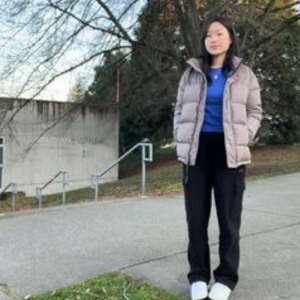
How can the City of Surrey's Community Arts, Library, and Recreation teams provide intergenerational opportunities at Clayton Community Centre on Family Day to strengthen community connections, inclusion, and civic pride?
Aman Singh
This research discovered a need to further utilize aspects of the facility space, structural layout, and some activities and services offered. Clayton Centre is a relatively new and unique multipurpose facility, with much more potential to enhance its services. Findings in the primary research revealed that more engagement between different family groups was needed and could be helpful.
Participants who came in their groups tended to stay together, and there was not much intergroup communication. One of the main reasons for this was the layouts and floor plans that could have used improvements. Another finding was the need to retain and involve more youth in programs, services, and events, including family day, and have them interact with seniors more frequently. The youth demographic was missing on Family Day.
Recommendations included providing more initiatives, prizes, and motives for youth participation in the family day; Utilizing Cooking programs, food knowledge, nutrition, growing own food, and gardening between different generations, young and old; Designing more engaging layouts and floorplans, and have more outreach staff engage with patrons; and finally Creating quiet room and spaces to help those with social anxiety or who overwhelmed by loud events.
How have rising costs of living affected youth participation in sports in Williams Lake, and what additional strategies can non-profit organizations implement to support families seeking access to sports?
Emma Davidson
The decline in youth sports participation is driven by financial barriers, shifting cultural attitudes, and the lingering effects of COVID-19. Interviews with local sports organizations highlight a drop in team sports, particularly hockey, due to rising registration and equipment costs. While fewer families apply for financial aid, the total funding requested has increased, signaling affordability challenges.
Many families remain unaware of available financial assistance, and structured equipment exchange programs are lacking. To reverse this trend, better promotion of funding options by non profit organizations, expanded gear-sharing initiatives, and increased financial support at higher levels like provincial and federal are needed to make youth sports more accessible and sustainable.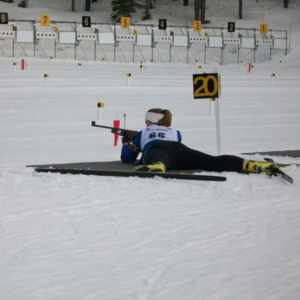
In what ways can the Tla’amin Nation teachings be woven into recreation programming at ʔayɩštən ʔaye | Cousin’s House to support and increase Elder participation and enhance intergenerational knowledge exchange?
Sydney Stonehouse
By utilizing Primary research and methodology methods, including interviews, observations, and content analysis, this study provided valuable insights into existing community programming gaps, barriers to Elder engagement, and opportunities for strengthening cultural connections within the Tla'amin Nation community. The findings highlighted the value of intergenerational programming as a way to connect all generations to foster traditional culture and knowledge preservation through an exchange, which ultimately enhances health and wellness for not just the participants but for the entirety of the community. It also shares a way to get elders into the ʔayɩštən ʔaye | Cousin’s House building.
Through the incorporation of cultural teachings, land-based programs, storytelling, and open invites to Elders, all of these styles of teaching provide a platform for collaborative learning and knowledge exchange in an organic way. The research also identified key challenges, such as the decline in traditional participation, barriers created by Western education systems, and the need for decolonizing recreational and educational programming. Similar findings found, throughout the literature review, suggested that incorporating more culturally relevant programs, alongside the Tla’amin Nation ʔəms taʔow (traditional teachings), could significantly benefit the Tla’amin Nation community by supporting intergenerational connections, preserving knowledge, and improving mental and physical health for everyone.
Lastly, one of the many key findings that emerged throughout the entire research project was the importance of having Elders present in Čičuy (children) programming, and in community spaces. Their presence alone carries deep value and respect. A few key recommendations but not limited to, that were brought up include: inviting Elders to programs without any expectations, allowing for stress-free, organic connections to form between them and the Čičuy (children); establishing a resident Elder, so there’s an Elder present during programming and setting the tone; and expanding collaborative efforts between agencies, which would help strengthen relationships across departments and support more culturally grounded programming.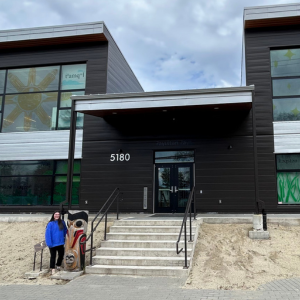
How can the City of Fort St. John Community Services Recreation Department deliver physical literacy education to community members waiting for specialised medical treatment who are experiencing chronic pain, in rural areas such as Fort St. John?
Teriney McGuire
This research will look at the correlation between physical literacy and chronic pain management. Specifically, how an individual can improve their own physical literacy and physical activity to help manage and understand their chronic pain. While they are waiting to see a specialist when they live in a rural area, a community with a population under 22,000, similar to Fort St John.
Benchmark communities, similar to Fort St John, with a population around or under 22,000 will likely have a good-sized hospital with medical staff (few closures or diversions), access to physiotherapy therapists, gyms and recreational infrastructure. The research will look at how exercise, and/or regular physical movement can help with the management of chronic pain, how pain affects the body and mind, and why exercise is a functional tool to manage chronic pain. Through the literature review, primary research consisting of interviews, observations and content analysis there was an abundance of information discovered. Information that helped to answer the research question.
The City of Fort St. John already delivers a wide range of programs and classes designed to get people active, physical literacy education. While more introductory classes could be offered with a small amount of education, this is already being offered. In regards to individuals who are waiting for specialised treatment for chronic pain there is more that could be done. There could be programs created in collaboration with Northern Health and local physiotherapists that are tailored to individuals experiencing chronic pain, there could be programs designed to offer more progression through gradually increasing intensity or even something as simple as adding information to the Recreation and Leisure Guide about who each program or class would benefit and what skill level is needed to participate.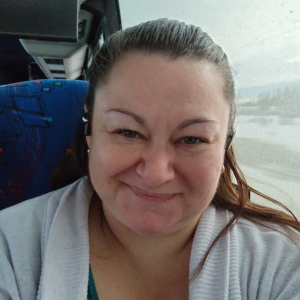
What barriers do youth immigrants (ages 11-18 years) face in accessing and participating community recreation programs, and what strategies can Port Coquitlam’s Recreation Department create to increase engagement?
John Astudillo
Throughout this research it was discovered the growth of Port Coquitlam’s total youth immigration rate was a benefit for the community as it resulted in population expansion and cultural diversity in the city, but brought a new challenge for Port Coquitlam’s Recreation Department programs to accommodate this group. However, the sponsoring agency experiences challenges such as having an established recreation strategy, balanced male-to-female participation ratio or youth immigrant participation in their youth recreation programs. A vision was needed to provide direction for the organization to accommodate the immigrant youth population. Programs observed in this research had participation consisting more males involvement than females or there was little participation from all youth immigrants because of limited programs.
To counter these challenges, proposing to develop a decade pattern of establishing a youth strategy to serve as a guidance in the vision to accommodate an immigrant youth population; providing provincial funding for new community centres to provide more programs or expand throughout the community; and incorporating female or new youth programs to improve participation level were created as recommendations to help Port Coquitlam’s Recreation Department increase youth immigrants engagement. By putting these recommendations into place, it will be imperative that youth immigrants (and their families) of Port Coquitlam receive the support they need.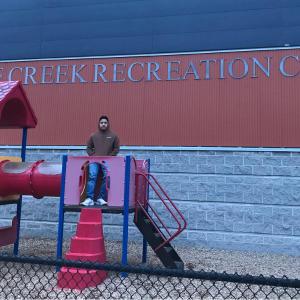
How can existing organizational practices be improved to enhance trans-inclusive environments in aquatic recreation?
Hillary Feliciano
After conducting primary research and analyzing current practices through interviews, observations, and content analysis, the research identified key gaps. This includes a lack of comprehensive staff training on trans-inclusivity and communication breakdowns between full-time and part-time staff. The findings highlighted that while some positive practices were in place, such as gender-neutral change rooms, there were significant opportunities for improvement in staff education and policy clarity.
The research concluded that addressing these gaps through targeted staff training, policy updates, and better communication could significantly improve the inclusivity and overall experience for transgender individuals in the City’s aquatic recreation facilities.
How do intergenerational recreation programs increase the social and emotional well-being of seniors and young people? How would increasing the regularity of intergenerational recreation programs benefit South Granville Seniors Centre and their community partners?
Kevin Mo
Key research findings from the RECR-4400 Major Research Project, Intergenerational Recreation Programs Improve Emotional and Social Wellbeing, highlight the connections between intergenerational recreation programs and senior-aged and young participants. The first part of the research question, “How do intergenerational recreation programs increase the social and emotional well-being of seniors and young people?” establishes the assumption that such programs are beneficial because people from diverse age groups need social contact and a sense of belonging to a community. Positive emotions are elicited when people connect and share in conversations, experiences, and stories. Connecting the primary research and the literature, observations revealed that pro-social behaviours are demonstrated and reciprocated in a feedback loop because of the initial approach to making a connection. Relationship building between a senior and a young person further strengthens trust and belongingness, while reducing anxiety and loneliness (Webster et al., 2023).
“How would increasing the regularity of intergenerational recreation programs benefit South Granville Seniors Centre and their community partners?” The regularity of intergenerational recreation programs strengthens relationships between seniors and young people to foster individual and community wellness. Increasing their regularity sustains their emotional and wellness within supportive and caring communities, which connect to South Granville Senior Centre’s mission to “promote social connection, health, and lifelong learning” (South Granville Seniors Centre, 2024). Community organizations are recommended to develop intergenerational recreation programs through the co-creation of seniors and young people and the enhanced community capacity.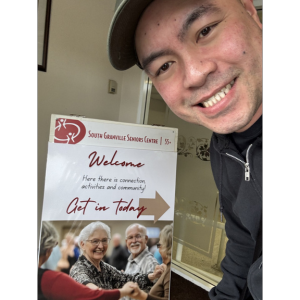
How can the Swim for Life program in British Columbia maintain long term appeal to sustain program retention through the upper levels?
Leticia Martel
Parental misconceptions play a critical role in program retention. Misunderstandings about the Swim for Life program influence parents’ decisions to enroll and keep their children in lessons. Parents’ perception of their child’s swimming level and understanding of the purpose of the Swim for Life program can have a direct connection to retention improvement.
The program is based on structured progression (Lifesaving Society, 2024). If the parents do not understand this structure and the incorporation of different skills at different levels, they can underestimate the value of continuing throughout multiple levels. By better understanding, they would see the need for their children to pursue the program until the end. The doubling of swimming distances at each level may contribute to fatigue, frustration, and can also lead to dropout as children progress. It was identified that one of the top reasons for children to stay in sport was fun and being boring as a reason for leaving (Riewald, 2003; Crane & Temple, 2015). If the progression in swimming distances leads to excessive fatigue or a feeling of being overwhelmed, it could lessen the enjoyment of the activity. By adjusting distances, young swimmers’ fun factors can lead to increasing their chances of staying in swimming lessons.
Furthermore, instructor energy and teaching style significantly impact swimmer engagement. A tired or disengaged instructor can lead to a disorganized class and decreased student motivation. Instructors are urged to promote a safe and positive environment for their swimmers in the Swim Instructor Course (Lifesaving Society, 2024). This suggests that the overall atmosphere of a class, which is heavily influenced by the instructor's energy and demeanour, is crucial for effective learning. A tired or disengaged instructor is less likely to foster such an environment. Moreover, it can be tied to parents’ perceptions. Parents were pleased with instructors who could effectively engage with the children (Layne et al., 2020). Conversely, a tired or disengaged instructor might be perceived as less qualified or effective by both students and parents (Layne et al., 2020).
What are the challenges of developing intergenerational programs and how can the James Bay Community School Centre create recreation programs that encourage participation and build connections between generations?
Jodi Appleton
The research showed that intergenerational programs (IGPs) provide many benefits to individuals and communities but that there are several challenges for developing these programs. The challenges identified in the research included institutional capacity challenges such as securing funding, providing adequate training for staff and volunteers, and finding a suitable location for the program and programmatic challenges such as finding an optimal schedule, ensuring activities are developmentally appropriate for the different age groups, and finding activities that are interesting and engaging for all participants.
With these challenges in mind, recommendations for the James Bay Community School Centre (JBCSC) to overcome these challenges and create recreation programs that encourage participation and build connections between generations included adding intergenerational programming as a strategic priority; striking a steering committee and inviting other organizations to be partners in development of the program; providing training to staff and volunteers to ensure the program was inclusive, accessible and safe for all participants; looking at funding options including reallocating some of their operational funds towards the program, pursuing grant opportunities and reducing costs by utilizing volunteers for some or all of the program's planning and facilitation; developing a volunteer management plan to recruit volunteers to participate and facilitate the program; and promoting the benefits of bringing different generations together through recreation to encourage participation and support implementation of the program.
Following some or all of these recommendations will increase the JBCSC's likelihood of running a successful intergenerational recreation program that builds connections between generations in their community.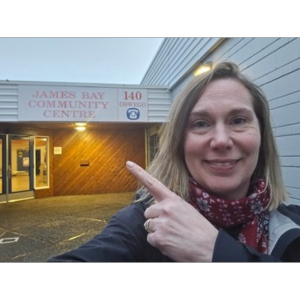
How does incorporating traditional culture in physical activity enhance programs service delivery for Carrier Elders in Northern BC?
Dana Thorne
Within Indigenous communities there is a cultural connection between physical activity, and traditional culture, particularly land-based activities. The effects of colonization have impacted cultural continuity of many Indigenous communities across Canada, including the Carrier communities in Northern BC. Despite this, Indigenous culture has persevered and is beginning to recover with the help of truth and reconciliation.
It is well documented that Indigenous communities want more culture and tradition opportunities, and are heavily interested in traditional land-based and cultural activities that reflect strong pieces of their cultural identity and history. Traditional activities such as hunting, fishing, fish-netting, snaring, berry picking, and gathering are highly sought after in these communities; activities that support the longevity and survival of the community. Offering programs and events that include tradition and culture, and using the Two-Eyed Seeing approach to bridge the gap between western and Indigenous culture emerged as a recommended tactic to create sustainable programs for Elders in Carrier communities. Fostering connections between relevant western and Indigenous practices to help cultivate greater participation and enriching experiences that enhance physical activity programs and services offered in Carrier communities.
Creating community-led program initiatives and offering programs that give opportunities and resources for Elders' to connect and pass on cultural knowledge to younger generations is one of the key components of enhancing service delivery; oral tradition and story telling are highly relevant for cultural continuity. Creating programs and opportunities to connect with community, culture and tradition in respectful and relevant ways are the key elements to enhancing program service delivery, and how to create cultural continuity that will keep Elders engaged through long-term participation.